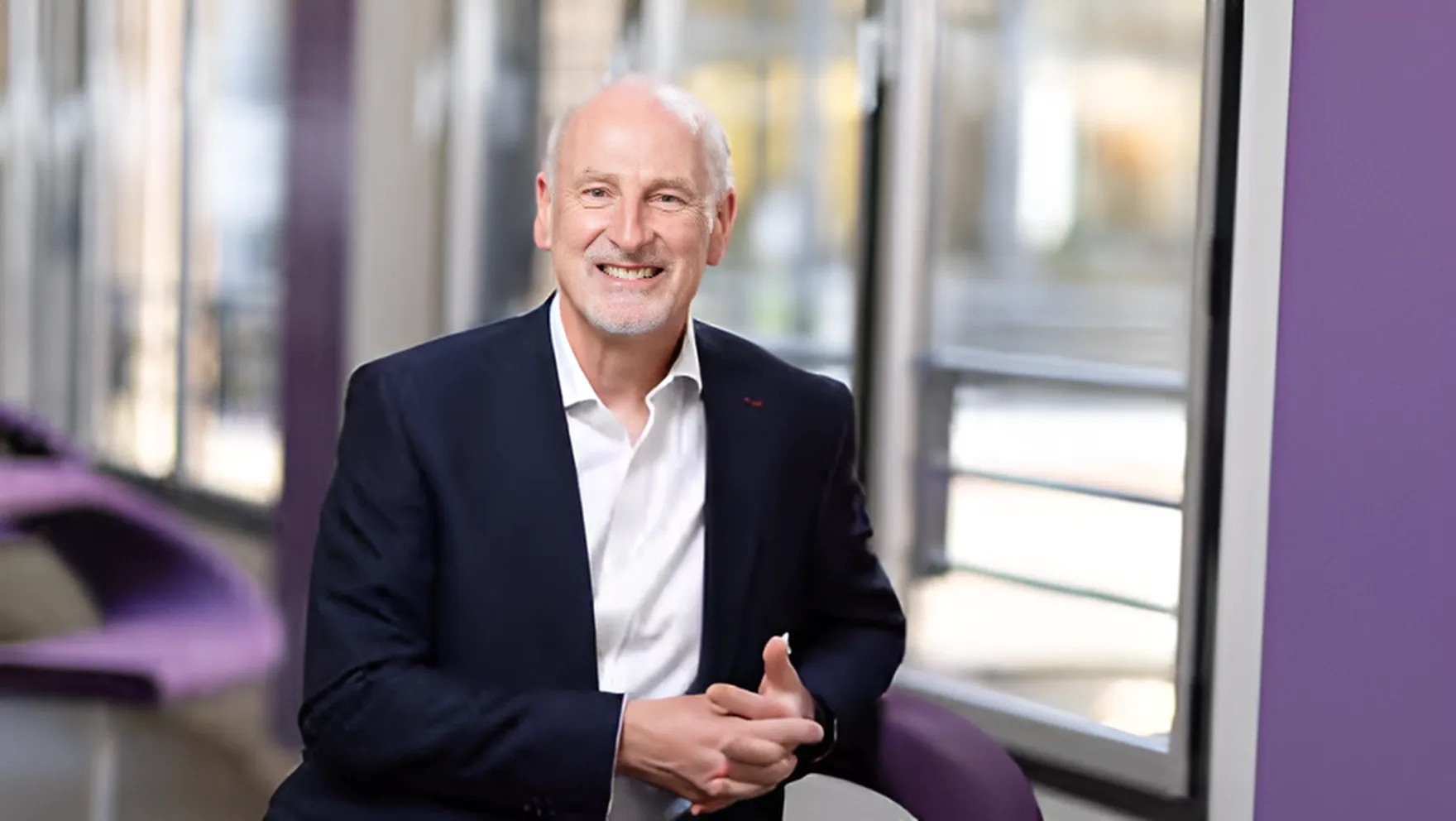Managing Change: “Kiss today goodbye and point me toward tomorrow.”
Charles Bayless is at home amid chaos.
It is a literal and figurative truth—speaking from his Durham, North Carolina, home as the United States reels from the public-health and economic crises created by COVID-19, Mr. Bayless reflects on the perspective that a career guiding companies through bankruptcy and other massive disruptions can lend business leaders in today’s unsettled environment.
He has served on no fewer than 20 boards, including that of the Puerto Rico Electric Power Authority, to which he was appointed in late 2018 as that territory continued to recover from the ravages of Hurricane Maria the year before. An engineer by training, Mr. Bayless has specialized in helping utility companies through restructuring efforts; in 1988, as senior vice president and CFO of Public Service Company of New Hampshire, he played an instrumental role in steering that company through bankruptcy proceedings—the first bankruptcy for a large U.S. utility since the Great Depression.
Further stints include serving as chairman, president and CEO of Tucson Electric Power and Illinois power company Illinova as well as campus president and provost for West Virginia Institute of Technology. In 2017, he joined Insigniam as a consultant.
“I happen to love change; I’m a change junkie,” Mr. Bayless says. “I’d much rather be in an environment where everything is
falling down around me than where I’m doing the same thing every day.”
In a wide-ranging interview, he offered his insights on the most important and incremental steps an organization must take to successfully steer through a storm. He also reflected on the ways in which the challenges posed to businesses by the COVID-19 pandemic are both similar to and distinct from other massively disruptive events that the global marketplace has weathered.
“You’ve got to operate in the environment that you’ve got and optimize that. You can’t go back.”
—Charles Bayless, Insigniam consultant
IQ: Having led companies on the brink of destruction, what, to you, feels familiar about this current cataclysm? What is unique?
Charles Bayless: This is something that’s touching every company and every person in America. Usually when you go into a company, you’ve just got that company that’s bankrupt. And you need to make changes and here, we’ve got to make nationwide changes, and those are not easy.
This thing isn’t going to slow down … We’re pretty much in this until we get a vaccine. And there’s so many people out there that are totally out of work, and these are people that can’t afford to be out of work. If you’re retired and have Social Security, you’re probably one of the best people off right now. There’s so many millions of restaurant workers and hotel workers and airline workers that are living paycheck to paycheck.
The singularity is people are in an unknown environment. And whenever I would go to a bankrupt company, one of the things about bankruptcy that every bankruptcy person knows—that’s sort of a slogan—is, “You’ve got what you’ve got.” You almost need to grab people—or you do at least need to mentally—to say, “Look, it’s not going to do you any good to wish for the old environment, to wish that this hadn’t happened.” Unless you can go back and change it, then fine.
You’ve got to operate in the environment that you’ve got and optimize that. You can’t go back. And I think that’s true for many companies today. They’re suddenly in a different environment, and they’re frozen. They don’t know what to do; it’s such a brand-new environment.
IQ: For any organization, what is necessary for responding intentionally, strategically, effectively—to avoid the crushing effects of inaction or an unorganized response?
CB: The first thing you’ve got to do is recognize the environment you’re in. And that takes a different set of skills. You’ve got to think that everything you’ve learned was learned in the past. I might be the absolute best engineer to design a utility operating project for three years ago—in a different environment, you have to look at, what plan is going to work in this environment?
You’ve got to get your team together. You’ve got to say: “OK, what’s going on? What are the external factors? Where is this going?” And things like, “Well, this is going to continue for maybe 12 to 18 months”—that’s important. What effects is that going to have on our suppliers? On our competitors? On us? On our customers? What’s the new environment going to look like? You’ve got to get everybody on the same page, because people will have different perceptions.
People [who are] looking at the same situation, because of their backgrounds, the knowledge they learned in the past, don’t necessarily view the future the same. And so if you just let the company employees go and say, “Go do it,” whatever “it” is, they’re not going to do the same thing.
The first thing you need to do in a bankruptcy or something like this is to get everybody together and have conversations where you try to look at the future and come to as near a consensus as you can of what that future’s going to look like. That consensus is necessary so that when you do say, “Go do it,” everybody knows what it is, and they’re going in the same direction. You can’t have people going in all different directions. Once they visualize that future, develop a business plan to go into that future.
I think the next thing you’ve got to worry about is culture. When I went to Tucson Electric, I got all the employees together, and I said, “My job’s pretty easy—your job’s hard, you’ve got to climb the poles, fix the wire, do the accounting—my job is to make it so that when you walk down the street in three years in a Tucson Electric Power sweatshirt, you can be proud of it. If I succeed in that, everything else is taken care of.”
Culture I always joke is like dark matter, dark energy in physics. We only see about 10% of the matter; most of the energy is unseen. Culture is like dark matter because the old status quo tries to maintain, tries to hold onto old business plans—things that people are comfortable with. The dark energy in culture resists new ideas. People don’t like to change; it’s hard to change. It’s much easier to do what you’ve been doing for the last six years every day.
I happen to love change; I’m a change junkie. I’d much rather be in an environment where everything is falling down around me than where I’m doing the same thing every day—that’d drive me nuts. Also, this is a time when you’re really going to find the leaders in your company—people who can resist that dark energy and dark matter and step up and really perform. Others are going to become paralyzed, and there’s not a lot you can do about it. I think that’s the next step.
IQ: How do you allow people to step up and allow these emerging leaders to lead, and as a senior executive to whom teams look for guidance, how do you strike the right tone of confidence, clarity and an in-this-together spirit while also being realistic about the scope of the challenges?
CB: I think you’ve got to give them a voice. CEOs are not perfect. There’s been a lot of CEOs that have come up with some very imperfect business plans. You can look around you right now and find quite a few. You really can develop a better plan if you use the team. You’ve got to get the team together and say: “Look, I have confidence in you people. If I didn’t have confidence, you wouldn’t be here.” And if there’s somebody there that you don’t have confidence in, you’re going to have to get rid of them. I’ve had to do that. I don’t like to do it, but it’s necessary.
I’ve done something I’ve called “green teams”—because the first time I ever did it, I had a blackboard and a green marker—and we put six people on each team and tell them: “You can’t talk to each other. Here’s the situation; you need to devise your solution and you’re going to present it to the board in a week. You’ve each got 15 minutes to present your solution.” Put the heat on them, and you will find the people who will rise to the top. You will get some good ideas.
Nobody can see the whole picture. I’m an engineer; I know transmission lines. I can pretty well see the transmission-line picture, but I don’t really know the whole power-plant picture, or the regulatory picture, so you need to get people from different fields, and they’ve got to work together to develop a plan.
IQ: Looking beyond the next 12 months—difficult though that may be today—how can executives help their teams better prepare to respond to external disruption in the future as well as hone their strategies for course-correction mid-response?
CB: I think you’ve got to course-correct about every day. I don’t mean changing your goals, but as new light comes [in], you’ve got to change course. It’s a lot like building a nuclear plant: You’ve got 10 million tasks, and every day you get a new chart that says what was done yesterday, and you’ve got to rejigger. No business plan is going to survive intact for five years. The external environment changes. As the external environment changes, we have to change. And if we change, we in fact change the external environment.
I think that’s the first thing, and I think a lot of it depends on what the situation is. I think one of the big things is uncertainty. You have a lot of companies that are very good at one thing. The farther you get away from your comfort zone, the more confusion and the more need for leadership and guidance and trying to establish clarity there will be.
The situation companies are in now is pretty much the situation bankrupt companies have been in all their life. They’re in a new environment. Suddenly the friendly banks aren’t so friendly; they’re calling the loans. One thing about bankruptcy is things change day by day. You don’t get continuity; you don’t get stability. Share on X Creditors walk in one day and they announce they have a different view than they had yesterday, and the whole game changes.
IQ: What experiences and perspectives from outside of your professional roles have informed your business leadership?
CB: Probably my ability to wing it. I always think a lot of times your instincts are right. I think growing up, I always had a lot of freedom. I grew up in the country; I was always running around in the hillsides and mountains, so I sort of became self-sufficient. And then I think failure. I went to college right out of high school and totally flunked out. I had a 0.00 average. I joined the Army; they put me in an electronics school for over a year, and when I came back, I majored in electrical engineering and did very well. I think that taught me you can always pick yourself up. You can always recover. One of my favorite sayings comes from “A Chorus Line”—I used to use it often with people—“Kiss today goodbye and point me toward tomorrow.” If you get knocked down, get back up and go at it again.



